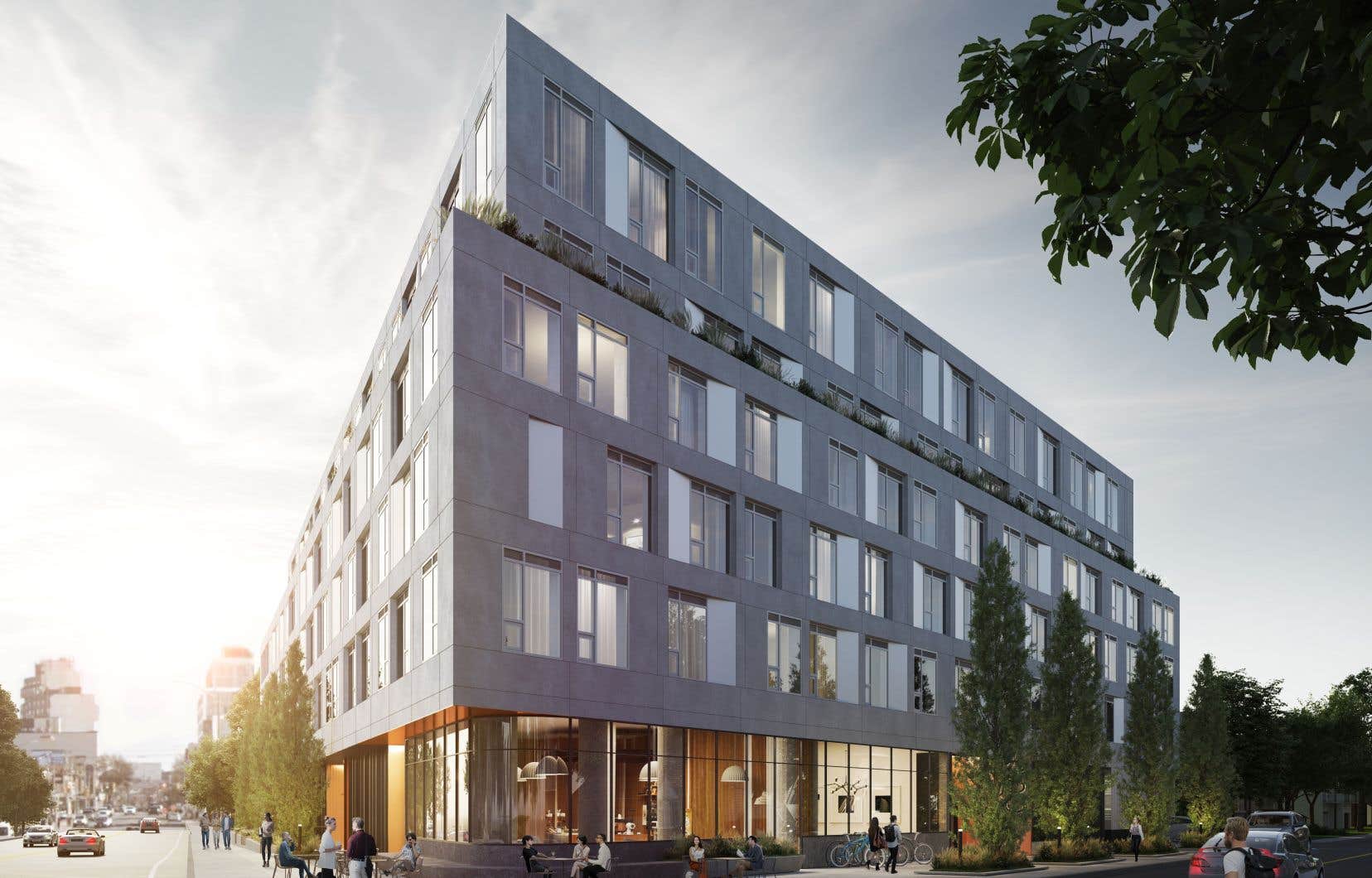This text is part of the special Real Estate section
“We want to participate in defining what a carbon neutral building is. Discipline director in sustainable strategies at the architectural firm Lemay, Loïc Angot has big ambitions. He is working on the design of a student residence in Kingston, Ontario, which he hopes will become a model for his colleagues. “We have to build differently from 20 years ago,” he insists. His vision will soon take the form of a six-story building.
What does a carbon neutral student residence look like? “It’s a compact building, the volume is quite simple: there are no boxes sticking out”, lists the engineer, citing the iconic Habitat 67 as a counter-example. “It will be better insulated than the average construction in Quebec and Ontario. We won’t see a curtain wall either: the windows must occupy a maximum of 40% of the wall. »
Loïc Angot concedes that these constraints, particularly the limits in terms of windows, sometimes make the architects with whom he works cringe. However, he sees them more as opportunities to innovate. “You have to find the right balance so that the result is aesthetic while meeting the objectives of reducing carbon emissions. »
Green rewards
“Until recently, there was only LEED certification for buildings,” notes Hani Diab, interior design director at Lemay, referring to the North American environmental certification system created in 1998. five years, on the other hand, there is an explosion of systems”, he rejoices. These certifications encourage his industry to go green, believes the designer.
If all goes well, the building the two colleagues are working on will receive two of these new certifications: Fitwel and Zero Carbon Building (BCZ). The first rewards constructions that encourage the adoption of a healthier lifestyle. At 600 Princess Street, a gym will allow you to exercise and socialize thanks to various common areas, such as a cafeteria and a rooftop terrace. “We also integrate elements of biophilia,” adds Hani Diab, referring to the design practice that aims to imitate the natural environment. “Biophilia is not only plants, but also the use of natural materials, colorings and textures that recall nature,” he explains. We don’t realize it, but a change in finish between tiling and something more textured contributes to this impression of contact with nature. »
Awarded by the Canada Green Building Council, the second certification targeted will reward designers’ efforts to reduce the carbon impact of construction. In addition to the work on the building envelope, the heating source has been designed to consume as little energy as possible and no fossil fuels. “For emissions that are impossible to avoid, such as those related to the concrete structure, we plan to buy carbon offsets,” adds Loïc Angot.
“What we are doing responds to an imperative need to protect the planet,” enthuses the sustainable development specialist, who notes that the target clientele for the building—students—is particularly sensitive to environmental efforts. “We live in a time of transformation. I hope that in 50 years, what we do today will be business as usual. For now, he and his colleagues are humbly trying to build the future.
This special content was produced by the Special Publications team of the Duty, pertaining to marketing. The drafting of Duty did not take part.
